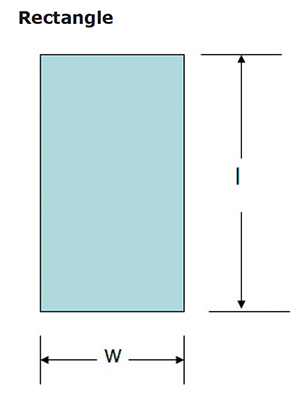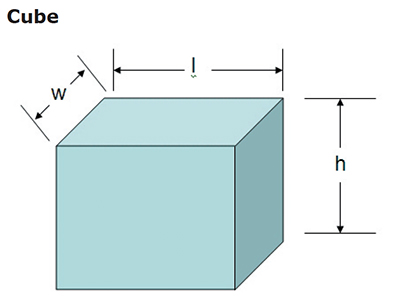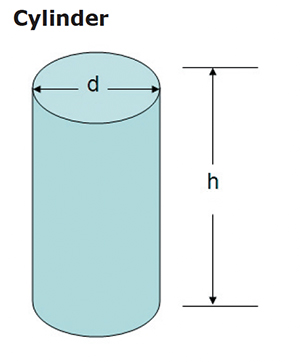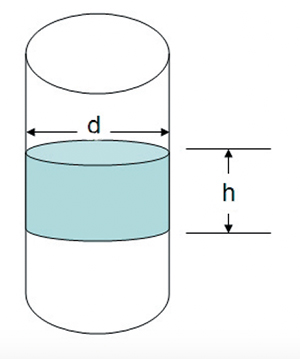Hard Chrome Plating Training Course
Appendix 4. Calculation of Surface Area and Volume
 |
Formula:
Surface area = width (w) x length (l)
Example:
A flat surface to be plated is 1.5 feet wide by 2.0 feet long. What is the surface area of one side?
surface area = 1.5 feet x 2.0 feet = 3.0 ft3
Convert to square feet to square inches:
3.0 ft2 x 144 in/ft2 = 432 in3
 |
Formula:
Volume = width (w) x length (L) x height
Example:
A plating tank is 3.0 feet wide by 6.0 feet long by 4.5 feet deep. What is the volume of the tank in gallons?
volume = 3.0 ft x 6.0 ft x 4.5 ft = 81.0 ft3
Convert cubic (ft3) feet to gallons:
81.0 ft3 x (7.48 gal/ft3) = 605.9 gallons
 |
Surface area = π x diameter (d) x height (h) or 3.14 x d x h
Note that π always equals 3.14.
With this formula, we do not include the ends of the cylinder because they are normally not plated.
Example 1:
A piston is 30 inches long and has a diameter of 4 inches. What is the surface area of the piston?
surface area = (3.14) x (4 inches) x (30 inches)
surface area = 376.8 in2
Example 2:
An inside journal is 1.5 inches long and has a diameter of 4 inches. What is the surface area of the journal?
 |
surface area = (3.14) x (1.5 inches) x (4 inches)
surface area = 18.8 in2
Volume of a Cylinder
Volume = π x (radius)2 x height
where radius (r) = d/2
Example: Volume of Partially Filled Drum
A 55 gallon drum with a diameter of 23 inches contains 14 inches of sulfuric acid. How many gallons of sulfuric acid are in the drum?
Volume = (3.14) x (23/2)2 inches x 14 inches Volume = 3.14 x 132.25 x 14
Volume = 5,813.7 in3
Convert to cubic feet:
5,813.7 in3 ÷ 1,728 in3/ft3 = 3.36 ft3
3.36 ft3 x 7.48 gal/ ft3 = 25.2 gal.
 |

